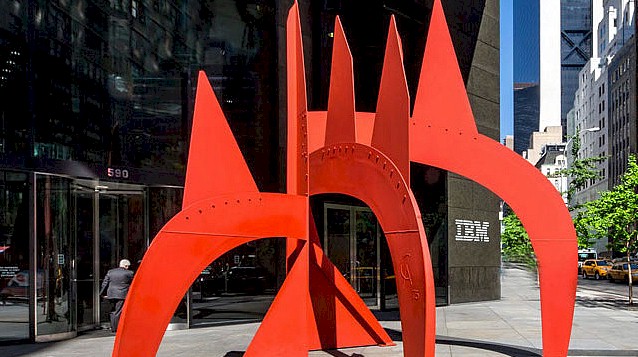
In the long run of the history of International Business Machines, a conglomerate established back in 1911 whose Electric Tabulating System was custom built by Herman Hollerith for the federal government in the United States for the 1890 census and then commercialized, the acquisition of Red Hat by Big Blue might, in hindsight many years from now, turn out to be the most significant of the many transitions that IBM has undergone.
We won’t know for sure until Jim Whitehurst, the long-time chief executive officer of Red Hat and once the chief operating officer of Delta Air Lines, takes over as chief executive officer of IBM some years in the future. But by naming Whitehurst president of IBM – which has always been a signal to who will be the next CEO and chairman of the company – this week, the succession of the company has been established and therefore, to a certain extent, the future path of the company is being supplied.
We have contended since IBM announced it was shelling out an incredible $34 billion to buy Red Hat back in October 2018 that this was as much about injecting new blood, new thinking, and a new customer base into IBM as it was about acquiring the world’s largest and most successful – by far – open systems and platform software supplier.
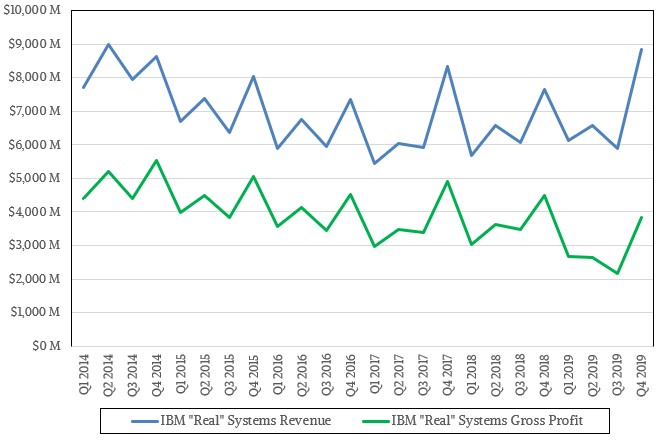
To be sure, IBM can use the extra money from Red Hat to add to its many revenue streams. In the fourth quarter, which was the first full quarter of Red Hat sales that IBM had on its books, Red Hat sales were up 24 percent (at constant currency) and that probably means around 25 percent growth as reported, based on IBM’s overall financials and the prevailing exchange rates. James Kavanaugh, IBM’s chief financial officer, said on a conference call last week with Wall Street analysts that the Red Hat products and services collectively broke through $1 billion in sales; we think it was around $1.06 billion based on our models. Sales were up 19 percent in IBM’s third quarter of 2019, normalized for the differences in reporting cycles for the two companies. So for calendar 2019, we think Red Hat did something on the order of $3.85 billion in sales. Kavanaugh said that more than 2,000 of IBM’s clients are using its hybrid cloud platform, by which we presume it means either the OpenStack cloud platform or the OpenShift container platform, running either on the public cloud, on private infrastructure, or both. This is a good start.
As we pointed out when Whitehurst and Arvind Krishna, the IBM lifer who has been named the company’s chief executive officer this week, replacing Ginny Rometty, announced the closure of the Red Hat acquisition, if IBM can push up Red Hat’s sales by 30 percent a year between now and 2023, it can get its $34 billion back by that time and also mitigate some of the revenue losses it is experiencing in its other businesses. Should this come to pass – and there is good reason to believe that IBM and Red Hat can accomplish this mainly because Big Blue is taking a hands-off approach with Red Hat – then Red Hat would grow from $3.4 billion in sales in fiscal 2019 ended in March to $11.3 billion or so in IBM’s calendar 2023. Call it 3X revenue growth for the five years between 2019 and 2023 (inclusive) for Red Hat. That is ambitious but not impossible.
What this is really about is the future of the Kubernetes container platform in the enterprise, and how that is the platform of the future. IBM knows more about platforms – and selling them at a profit – than any company on the planet, and has been creating them for longer than any of us have been alive. It is helpful to remember that sometimes. It is that institutional memory and long history and deep pride that Krishna will bring to the table as Ginny Rometty steps down in April, retaining her role as executive chairman for perhaps a year or two as her predecessors, Louis Gerstner and Sam Palmisano, did.
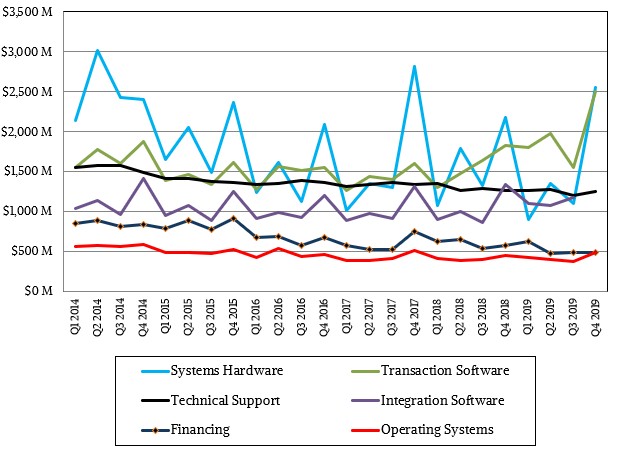
Rometty gets a bum rap sometimes, and that is really not due to what she has done or not done, but because of the very high expectations that investors and customers have for Big Blue and the very tough situation IBM finds itself in. To her credit, in 2012 when she became CEO, Rometty inherited the same problems of managing down several legacy platform businesses that Gerstner did in 1993 when he came in from American Express and that Palmisano managed down as well after he took over in 1999. It has been two decades since John Akers was president and CEO and when IBM nearly went broke as so many transitions hit the IT market in the late 1980s and really crunched the company in the early 1990s. To be perfectly fair, Gerstner had it easier than either Palmisano or Rometty because IBM’s businesses were bigger and its stature higher two decades ago. It has gotten harder and harder to be the IBM CEO over the past five decades, and Krishna and then Whitehurst will have their share of grief. But there are tremendous opportunities, too, and there is always hope and this, among other things, is what Red Hat is supplying. That is why IBM bet so big on Red Hat, it’s largest acquisition and the second largest deal in IT history after Dell taking itself private a few years back.
IBM set the pace in data processing in the 1940s through the 1950s, and made the biggest bet in its history – and in the history of any company in history – with the System/360 mainframes back in the 1960s. In 1961, IBM tapped Gene Amdahl, the chief architect of the first real mainframe and the one who coined his own law of computing based in part on this work (a system only goes as fast as its slowest part), to design a line compatible computers that would span a very large performance range and that would be based on very different underlying technologies and very different cost points (hence the 360 degrees implied in the name). Fred Brooks was responsible for steering the creation of the System/360 software stack, which was arguably the hard part and which led not only to his own law (adding people to a software project that is running late makes it later) but to a best-selling book called The Mythical Man Month that explained these hard lessons that Brooks learned developing the System/360 software stack and its successors.
Back in 1961, IBM’s systems business was a mixture of electromechanical and electronic computing machinery, and the company had $2.2 billion in revenues and $254 million in net income based on that business; if you convert that to 2019 dollars, that would be $18.8 billion in revenues and $2.17 billion in net income, which is a pretty healthy company, and particularly impressive for a hardware company but that was the nature of the time. The System/360 was developed under the code name “Next Product Line” and originally had a budget of $675 million ($5.77 billion in 2019 dollars), which was a very large budget indeed by any standard. That included factories, assembly lines, and the whole shooting match, and even if it were spread over four years between inception and launch, it still worked out to about somewhere around 8 percent of topline revenue if IBM’s revenues stayed flat from 1961 through 1964, when the System/360 launch in April of that year. But that was a ridiculously low estimation of what it would cost to create the System/360 range, which was more like $5 billion, or $42.8 billion in 2019 dollars.
Process that: A research and development project that consumed more than two years of revenue. Even with the overspending on software projects because of the man-hour myth, it is still a staggering amount of money. But look at how it played out and paid off.
IBM became the first blue chip stock and the most profitable company in Wall Street history, and had a run that lasted at least fifteen years. We went over this history a little bit back in 2010, pointing out that in the wake of the System/360 announcement, IBM was Google. Or more precisely, the Google of 2005 through 2015 was the IBM of 1965 through 1975.
In 1968, ahead of an announced stock split, IBM’s shares were trading at $688 a pop on the New York Stock Exchange, which was 59X 1967 earnings, and the stock had more than doubled in the months between when the stock split was announced and it was accomplished. Converting those 60 million shares into 120 million shares was the largest share redistribution in the history of Wall Street. The runup to the split created $22.1 billion in incremental market capitalization, which would be like $162.4 billion in 2019 dollars in value; IBM’s market capitalization was $82.6 billion at the time, or $606.8 billion in 2019 dollars. And this was not even IBM’s peak. In 1968, IBM had $6.88 billion in revenues, up 29 percent, and net earnings of $871 million, up 34 percent and representing 12.7 percent of revenues. The company was still doing an enormous amount of hardware and software investment, and its rise was so dramatic that a year later the Antitrust Division of the US Department of Justice sued Big Blue for antitrust violations of its 1956 Consent Decree governing its behavior in the IT market. A recession started that year, too, which slowed things down, but a new line of System/370 mainframes allowed IBM to roll through the next decade, growing revenues and profits steadily.
This history is meant to supply some perspective, and even though none of the current top brass at IBM lived this history, they knew some of the people who did and the True Blue remember this history and it informs their thinking, for better or worse. The point is, this Red Hat deal may not be the biggest bet IBM has ever made, but it may be its most important bet because its position as a leader in IT depends upon its success.
Krishna, who has spent his entire career at Big Blue, represents the old guard and, to his credit, a new way of thinking in his own right, just like Gerstner, Palmisano, and Rometty did in their turn and Tom Watson, Vin Learson, Tom Watson Jr, Frank Cary, John Opel, and even the ill-fated John Akers did in their turn between 1914 and 2020. Akers did not see the proprietary minicomputer, Unix system, and client/server revolutions having the massive impact that they would on that core platform business, and IBM suffered terribly from 1991-1993, with massive writeoffs and layoffs that were as dramatic as its rise in the 1960s. Antitrust issues and the collapse of IBM’s business in the early 1990s weighs heavily on old guard IBMers, and it explains some of their hesitancy as well as their desire to compete.
IBM CEOs tend to be cross trained in a lot of areas and geographies, and when you see someone moving around a lot – but not too much – as they rise, then they are a possible contender for the top job.
Krishna had key technical roles in IBM Research and Software Group early in his career, and broke out of the pack when he created IBM’s security software business through a mix of acquisitions and internal development. He was eventually put in charge of strategy for Software Group, and then rose to be general manager of the Information Management division of Software Group, which is the part of IBM that has its transaction monitoring software, data integration, and data analytics software. Then Krishna took over development and manufacturing for the Systems and Technology Group, when the company still had its IBM Microelectronics chip design and manufacturing business, and eventually he took over IBM Research as well as Cloud and Cognitive Software businesses. That’s basically everything but the core Systems Group and the Global Services behemoth and the Global Financing arm. Importantly, Krishna drove the acquisition of Red Hat, and has been in charge of how IBM works with Red Hat, with a delicate touch instead of just doing a Borg on it and destroying some – if not all – of its value.
Krishna, who is 57, is the right person to steer IBM for the next few years, and to take over as chairman of the board when Whitehurst, who is 52, ascends to the CEO job, probably in the next three to four years. Whitehurst got his bachelor’s degrees in Computer Science and Economics at Rice University, studied abroad at the University of Erlangen-Nuremberg in Germany and the London School of Economics as part of those degrees. He then got his MBA at Harvard Business School. Whitehurst cut his teeth in the business world with a twelve-year stint at Boston Consulting Group, and then took a job at Delta Air Lines, which had a very top-down, hierarchical management style much as IBM has always had. Whitehurst rose to become chief operating officer of Delta in 2005 the wake of the turmoil that 9/11 caused in the airline industry and in the global economy, and rebuffed a hostile takeover by US Airways and steered Delta out of bankruptcy.
Running Red Hat for nearly the past decade has been a different kind of experience, and it requires a more deft touch given the independence that the open source community not only demands, but upon which it thrives. This requires much more collaboration than it does command, but Red Hat also needs to coalesce all of these open source projects down to a set of ruggedized, well-supported, enterprise-grade products that companies are comfortable consuming. Red Hat is arguably the only company that has consistently done this well, and the fact that it was kissing $4 billion in sales in 2019, by our estimates, is a testament to all of the hard work that the open source community does out of love and ego and necessity and that Red Hatters give fit and finish to so it can actually be used by people who don’t necessarily want to be hard-core system programmers.
Red Hat didn’t need Big Blue to succeed, but IBM surely needs Red Hat to do so. And for the sake of real competition in the IT industry, we hope that success comes a lot easier to Krishna and Whitehurst than it did for Palmisano and Rometty. IBM has a lot of the right pieces to transform itself, and it need only look at Apple to see that it can be done with the right set of ideas. (Apple has been nearly dead twice by our count.)
Our strong suggestion is for IBM to be a lot more aggressive about truly building new, modern systems and stop worrying so much about protecting its installed base. It truly needs to become International Business Machines again, and stop letting others architect the hardware and software stack. If you want to extract value, you have to add it first, and that might mean getting back into compute, storage, and networking in a serious way. And that might mean merging with some chip suppliers that are too expensive for IBM to buy and really owning the stack, top to bottom, bolts to bits.
Red Hat could be just the beginning of the real transformation of Big Blue. It remains to be seen if this is what IBM wants for itself or what the IT industry wants it to do.


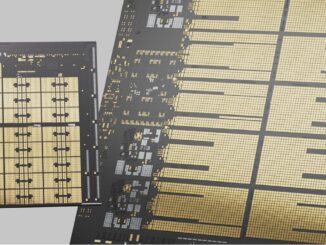

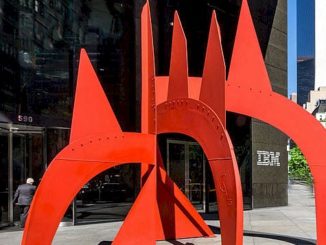
Be the first to comment